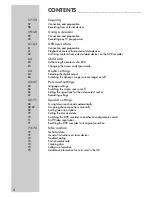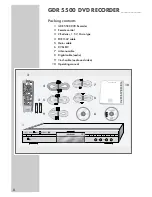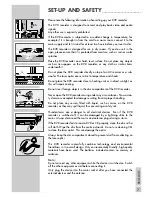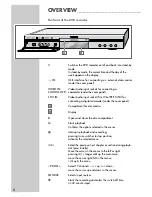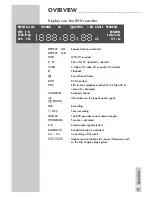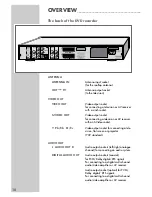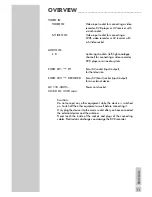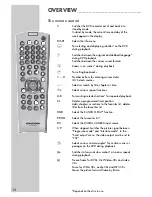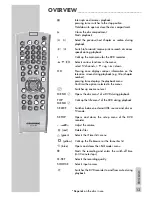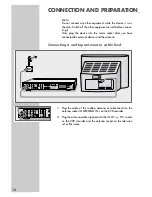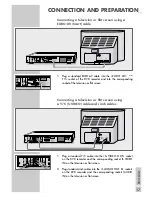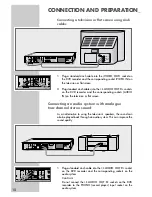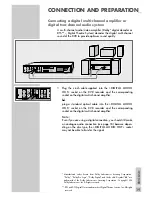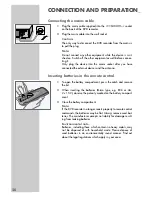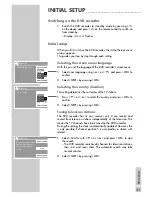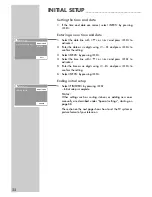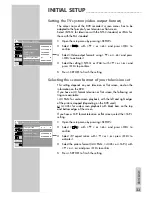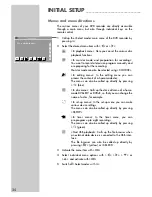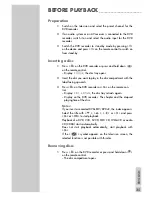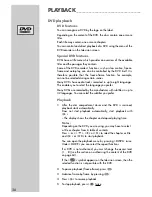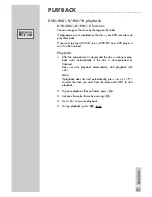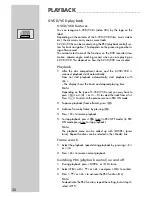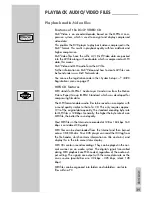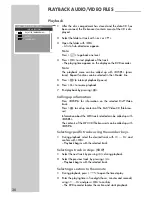
ENGLISH
15
Connecting a television or flat screen
You have four options, depending on the sockets you have on your
television or flat screen:
– For the best picture quality, make the connection at the EURO-AV
socket using a fully assigned EURO-AV cable. Here you have the
option of setting the output formats Interlace or Progressive Scan
(see page 66).
– Connection via the cinch sockets Y, Pb/Cb and Pr/Cr (video
signals) and the AUDIO OUT cinch sockets (audio signals).
This connection (Progressive Scan) can also be used for projec-
tors.
– The standard connection for many devices, and one which
provides good quality, is via the S-VIDEO OUT socket and the
AUDIO OUT cinch sockets.
– The simplest option which stills offers sufficient quality is to connect
the VIDEO OUT socket and AUDIO OUT sockets using cinch
cables.
Connect the DVD recorder directly to the television or flat screen.
If you connect a video recorder in between, the DVD’s copy
protection may impair the picture quality.
Connect the television or flat screen – using a
cinch cable (Progressive Scan)
Caution:
This connection transmits video signals at a high frequency
range. Before you first switch on the device, please check
whether your television, flat screen or projector is suitable for
this use.
GRUNDIG accepts no liability for damage resulting from
negligent usage.
Notes:
If you connect the DVD recorder using the »
EURO AV1
➞
,
TV
« sockets via an adapter, you must carry out the setting
described in the “Selecting the video output socket” section on
page 66.
Then you can use the »
I/P
« button to select whether the video
signal is provided in progressive mode or interlace mode.
Depending on the model of television, flat screen or projector,
you have to activate the relevant input sockets on the device.
CONNECTION AND PREPARATION
__




